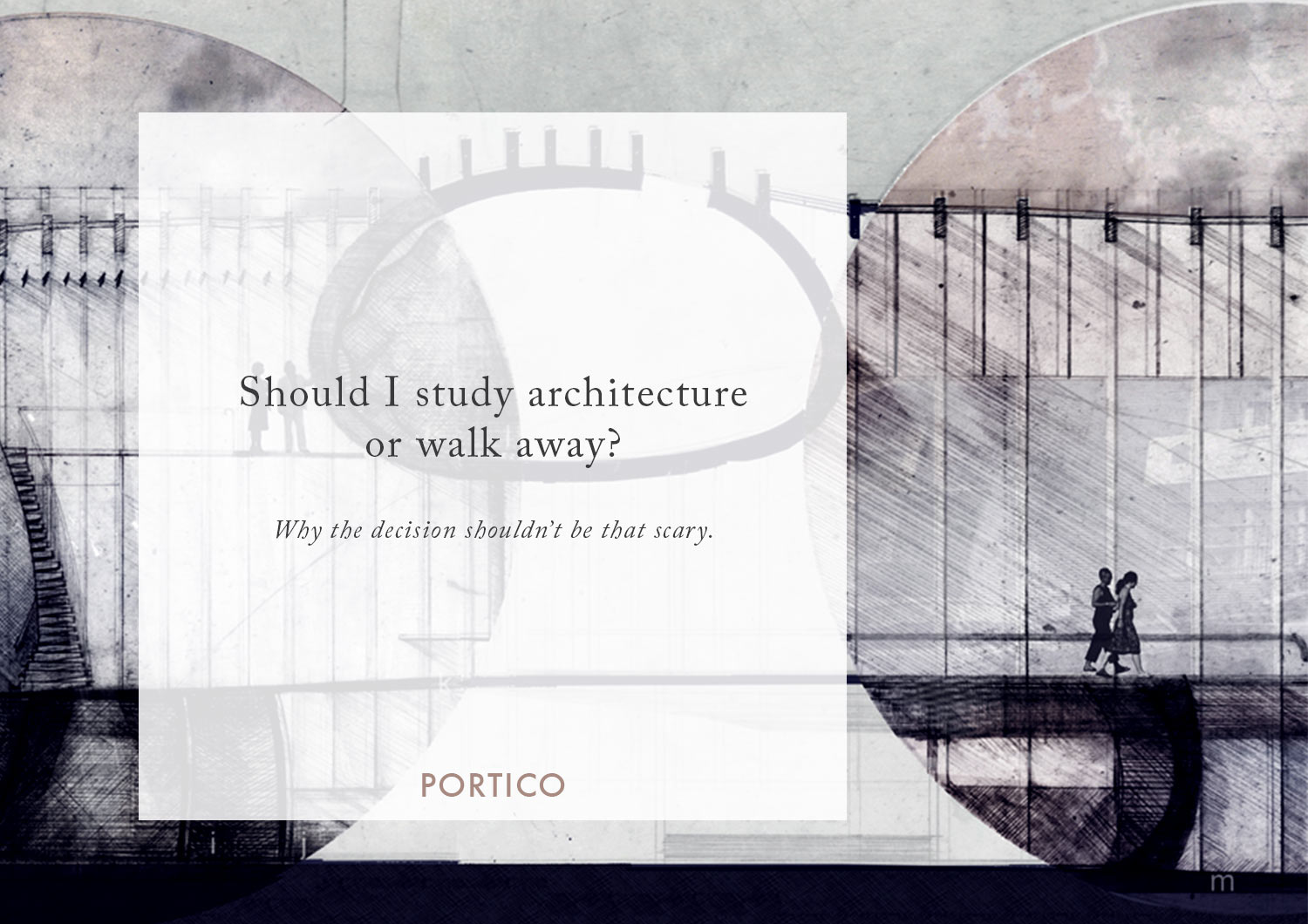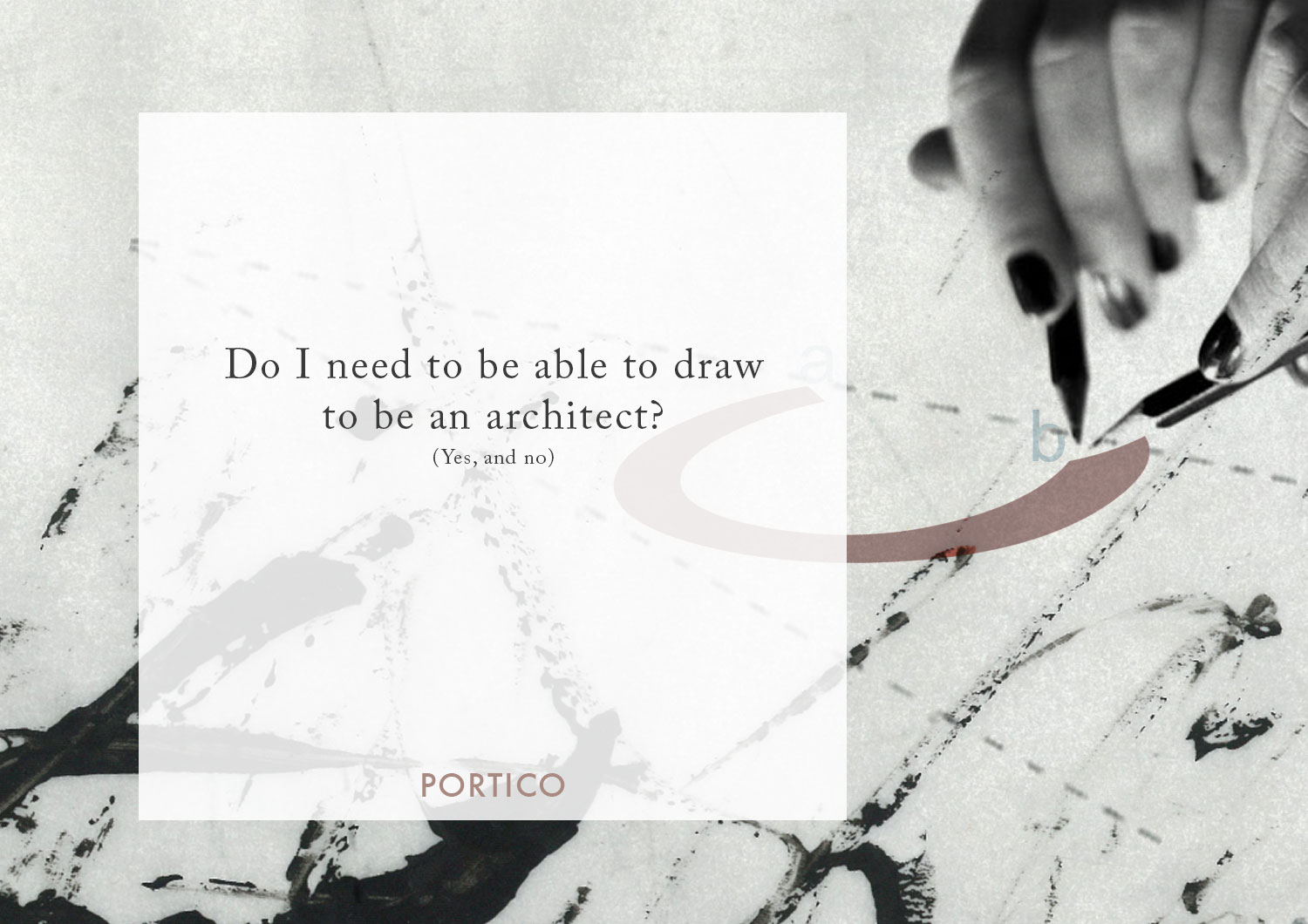Surviving Group Projects at Architecture School
THE INFAMOUS GROUP PROJECT AT ARCHITECTURE SCHOOL
How do you feel about group work?
It's a contentious question - I know.
In my experience - both as a student and as a teacher - there are two kinds of people at architecture school:
those who love group projects; and
those who begin trembling with anxiety at any mention of working with others.
Unfortunately, all it takes is one bad group project experience to tip those in the first group into the latter group. And going back the other way isn't such an easy slope to climb.
You think you're at architecture school to develop your individual creativity, your unique architectural potential, and to realise your dreams. And you are. But how you develop your sense of self is intricately connected to how you relate that self to others, how you communicate your ideas, and how you can identify personalities and skills to complement your own.
Groupwork & Architecture School
Increasingly, Architecture schools are turning away from the image of the individual Architect. Instead, their aim, in varying degrees, is to enable students to be widely engaged professionals, with advanced collaboration skills and abilities to interact with a range of other people - from coworkers to children to lawyers, clients and consultants.
What are group projects?
The type of project you might do in a group at architecture school can vary a lot. For example, you might:
build a complex model together;
undertake initial site analysis;
develop a construction report;
liase with community;
built a 1:1 structure or installation;
or propose a large scale urban project.
You might do all, or part of a project in a group. You might be in a group of two or three, or a large group of 10 or 20 students. You'll often be grouped with your architecture school peers, but you might also work with students from other disciplines, other year groups, or even with other groups of people - such as artists, members of the public, or client groups.
THE VALUE OF WORKING IN A GROUP
why do you do group projects at architecture school?
While the things you do or make, and the groups you do or make them with might vary, the underlying reasons for why you are doing the work in a group in the first place usually fall into one of three categories. Identifying which category - or categories - each project falls into can help you direct your work and get the most out of the project.
The 3 reasons you do group projects at architecture school:
1. You learn to work with others
2. You can get more done
3. You learn from those around you
Let's run through each of these.
1. Learning to work with others
This is the obvious one. By working in a group, you learn how to work in a group. Or at least, that's often the main intention.
This builds on the idea that architecture school can better prepare you for practice by, in some ways, replicating the way practice works. Much of the work you do in an architecture firm will be in collaboration with others. In fact, it's pretty tricky to envisage a project which wouldn't have the input of other people. This is one of the key skills that will put you in good stead in the office environment as a graduate.
But even beyond practice, working with others is perhaps the number 1 most critical skill when you leave the cocoon of university and step out into the 'real' world. It doesn't matter what you do after university. Funnily enough, the real world is full of 'other people' who you will need to quickly be able to establish relationships with, learn from, and manage your responses to.
But learning to work with others doesn't just happen because you are in a situation where you have to do group work!
In reality, you only learn to work with others if:
you engage in the process and actually work with others (instead of operating as a solo agent);
you establish and test different methods and systems for working with others;
you take turns leading and following (you won't always be one or the other in the real world);
you practice self-awareness; and
you reflect on the project after you hand in!
2. Efficiency
At architecture school there is a lot to learn, and often only limited timeframes in which to learn it. Often projects are just too big, too complex, or too disparate for one person to carry out alone.
This is where group work can be useful: when you work in a group, you can cover the same amount of ground in less time.
This means that as a student, you have access to a much larger amount of information much more quickly. Sometimes, you will work in a group only at the initial part of a project. This can provide a good base collection of work which everyone understands and has access to, in order to kick start the process. It also means you avoid duplicating work, which can be useful in projects where there is a lot of ground to cover before the design or critical thinking begins.
A second aspect of efficiency isn't about the manpower behind the project, but about that specific skills of the group. You're able to focus on the aspects you know you can do well, and do quickly, and let others take on the tasks that they can do well. Or, they can support you to do the difficult tasks more efficiently.
3. Learning From Others
Finally, learning from others is the aspect which is most often overlooked, but can be the most valuable aspect of group work for you as a student.
Too many students assume that they can't learn much from their friends, peers, and others at a similar stage in their journey. They are wrong.
Sure, you might not learn new facts, data or specific techniques from those in your group - although you might. But the learning you will be able to do in this situation is arguably even more important than these things.
By working with others, you will be exposed to different ways of looking at a problem, and you wil see things you didn't see before. You'll also learnt to reflect on different aspects of your own work and processes. Even if you don't necessarily agree or like what your teammates are doing, noticing this can be very revealing of your own values and skills, and can often be surprisingly reassuring.
Of course, within the team, the process is reciprocal. You can share your unique skills with them.
When group projects turn ugly...
Given all the positive outcomes of working in a group, not to mention the fun you can have doing it, you'd think that all group work runs smoothly and everyone has a sense of the value of it. Unfortunately that's not always true.
Group projects, by definition, involve working with people - and people are complex, emotional, and driven by very different goals.
so why are group projects so difficult to master?
Reason 1: It's YOU
It's hard to admit, but often the reason your group project isn't working out well is because of you. To really excel as a group, you need to think as a team, not as a collection of individuals. For you, that means that:
You have to contribute and be free with your ideas rather than holding them tight;
You have to be malleable with your ideas;
You might need to work differently to how you usually do - either using different methods or in a different sequence;
You need to be present.
Reason 2: It's THEM
This is the reason everyone loves to give for why their group project didn't work out: it was everyone else's fault. Of course, shifting the blame like this isn't only unfair, it also isn't usually very helpful.
They didn't turn up to meetings;
They didn't do their work;
They didn't do their work as well as you would have done the same work;
They wanted everything their own way;
They didn't let you contribute your awesome ideas.
2. Finding everyone's strengths (and managing weaknesses);
Reason 3: It's THE WORK
The third reason why group projects often don't run smoothly is to do with the work and production required, and how the group manages this. Groups often fail because they don't organise the work at the very beginning, or fail to follow through on their aims. Problems with work in group projects include:
Unequal distribution of work;
Not tapping in to people's individual strengths;
Not having a plan to manage weaknesses;
Not having a shared goal for both the quantity and the quality of output;
Not following up on individual contributions;
Late or incorrect timing of individual inputs;
Not prioritising the work correctly.
How to make GROUP PROJECTS work
6 steps to lead your team to success
STEP 1. DEFINE YOUR COMMON GOALS
hint: think as a team, not a group
The #1 downfall of teams is not defining goals - and making sure everyone is onboard with those goals - at the outset. Goals are what allow you to keep track of the various tasks, have a big picture of how everything will come together, and generate a sense of what you are all working together for.
There are two types of goals that you will deal with in a group project:
Project-specific goals
These goals are about the project outputs - what you need to do, produce, or evaluate in order to meet the brief. As a group, your goals might take into account the type, complexity, or efficiency of the investigation. You might aim for a certain quality of output, to develop a highly convinving project in one aspect, or to produce a professional quality research paper.Broader learning goals
Broader learning goals tap into my discussion of 'why we do group projects' above. As a group, you might want to test a certain kind of project management, give someone the opportunity to grow in a leadership role, or set up partnerships so you can each work on developing new skills from other specialists in the group.
Once you have your goals in place, you can start defining your plan of attack.
STEP 2. GET SERIOUS: pretend you are an architecture office
This might sound strange - because you're not an office, and it's likely not a real project you're working on - but pretending that you are an architecture office can be a great way to define the roles, expectations, and level of professionalism you want to achieve as a group.
Bear in mind that there are 2 types of roles that each person will need to contribute to:
Project Tasks
These are tasks that need to be completed for work to get done. This includes things like site analysis, precedent research, confirming the concept, making a model, doing drawings etc.Team Management Roles
These are tasks and roles that enable the team to function together well and get the job done.
You need to resolve how each member will contribute to both of these at the beginning.
For the project work, this might involve:
broadly defining everyone's strengths and weaknesses;
defining the key project work streams, and breaking down into sub-groups;
figuring out who will distribute and oversee tasks;
figuring out the critical sequences within the project - what needs to happen first, so that someone else can start their job?
In terms of the group, you might like to:appoint a leader to give final say on design decisions & direction;
appoint someone to take notes at every meeting (or use a dictaphone to record them for later reference);
appoint someone to summarise at end, make sure that you are all on the same page before parting ways to do further work individually
appoint someone to make sure everyone gets involved (the team mascot role);
figure out who will keep everyone on track & hold people accountable;
define the method for managing any relationship issues;
Make sure the expectations and roles are defined clearly from the outset. This can seem like a strange thing to do, perhaps too formal, especially if you working with friends. But, you should be aware that group projects (much like flatting) are situations where, if not managed correctly, friendships can turn ugly.
Step 3. develop clear communication channels
Once you have established your goals, and distributed the tasks required to get there, the next thing to make sure you have in place is clear communication channels.
Historically, this was probably setting a recurring weekly or even daily meeting.
Today, you have so many options for how to manage your communications. But too many methods can be as detrimental as no methods - so think carefully about what will work best for you.
In-person
No matter how technology savvy you are, you'll probably still want to have at least some face-to-face catch ups on the project. The extent of this is up to you.
A few questions to ask yourself:Will you work together, in studio?
Will you mainly work individually, then meet daily or every 2 days for review?
How often will you schedule a weekly project overview meeting, to assess goals, issues & progress?
Online Communications
The range of online communications today means you can interact with other working on your project at almost any time, form almost anywhere. The potential ranges from the basic (email) to the everyday (facebook group), to the more integrated (Google Hangouts, or Asana). There are new platforms and team project management tools being developed everyday!
Some of my favourite current options you might want to consider:mail
Facebook group
Asana - because good use of online communication can be as simple as seeing that others are ticking things off their list.
4. SET UP YOUR STORAGE SYSTEMS
Getting the work done is one thing, but making sure it is visible, accessible, and safe is another. Don't let your whole group be brought down by that one person who always loses their hard drive or crashes their computer without saving their files.
1. Storage
There are a couple of things to think about here. First, you need to understand the kind of work will you be producing. What you are producing will affect how and where you should be saving it!
Are you producing:
Models?
Hand-drawings?
A 1:1 project?
Written research?
Visual or image based research?
herefore, does the storage need to be:
A physical space?
Visually accessible (printed out, pinned up on a wall? or on Pinterest?)
Able to manage large files (Dropbox, Google Drive)
Able to be commented on easily (Asana, Evernote)
Able to be superseded or ticked off easily (Asana, a shared computer drive)
Able to have multiple people working on it simultaneously (Google Drive, Indesign for layout of various elements)
2. Back-ups.
Back-ups are kind of like the dark side of storage. No one really wants to talk about them. But backing up your work - as frequently and automatically as possible - is key to any stress-free project.
In group projects, this is extra important because of the added possibility that someone else in your group might unknowingly override or erase some of your work or files.
Not only should the group be backing up their work, but you should be backing up everything that you, as an individual, contribute - or making a copy of the group work once you have made critical changes. This means you'll always have your best work in your back pocket.
You can back up:
To a different server drive;
To a cloud service (Dropbox, Google Drive, Evernote);
To an external hard drive.
And if you're super on to it - you should be backing up your backup too. My current system - after breaking one to many computers and losing one too many drawings in architecture school - is generally:
1 cloud-based backup which is virtually always up to date
AND 2 external hard drives which I update once or twice a year.
5. REASSESS, OFTEN.
Unfortunately, even if you do all the planning in the world, there will often be certain aspects of the project or team which don't run smoothly.
The key to (eventual) success is to make sure you keep your eyes and ears open for any issues, and reassess the systems you have put in place, to make sure they are serving you well.
This might mean:
redistributing work;
re-considering the leadership structure (or putting one in place!);
cutting some tasks to allow others to be completed to a higher level;
changing the meeting timetable;
introducing a new storage system;
reflecting on whether the team goals are achievable.
6. HAVE FUn!
Once everything is in place, you can forget about all the systems and have fun! Well, not really - refer to Step 5.
But, fun should be built in to the group project. The very best thing about group projects is the joy you get out of completing something seemingly beyond any of your individual capabilities, together. And, of course, the laughs you have along the way.
Be yourself, have humility, share your fears and your wins, share a beer, and keep your heart open. The people you're working with could be your future best friends - or your future boss.

















